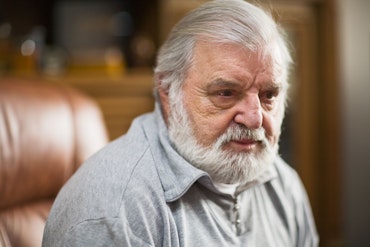Additional funding and support for remote and rural aged care services welcomed
More than $3.7 million in one-off grants has been announced by the Australian Government’s National Aboriginal and Torres Strait Islander Flexible Aged Care Program (NATSIFACP) and welcomed by aged care peak bodies.

Funding for Indigenous aged care services welcomed (Source: Shutterstock)
The funding comes in addition to the $33.5 million the program provides annually and will go towards improving Indigenous aged care services across New South Wales, Victoria, South Australia, Queensland, Western Australia and the Northern Territory,
Minister for Aged Care and Minister for Indigenous Health Ken Wyatt says the grants will provide practical assistance to 18 aged care providers to improve the lives of their elderly care residents.
“The NATSIFACP is designed specifically to improve services to elderly Indigenous people, mainly in remote locations,” Mr Wyatt says.
“They will ensure that buildings are appropriate for Aboriginal and Torres Strait Islander cultural activities, customs, ceremonies and family visits.
“We want aged care that is flexible, non-discriminatory and culturally appropriate, no matter where people live, and inclusive of elderly Indigenous Australians who are among our most vulnerable citizens.”
The grants also give providers an opportunity to refurbish or upgrade living spaces for clients or staff, buy a range of necessary equipment for kitchens or laundries, and to fulfil medical or security requirements.
Aged and Community Services Australia (ACSA) CEO Pat Sparrow welcomes the funding announcement saying that improving services for indigenous people and ensuring an integrated system across Australia, not just in metropolitan and regional areas, is really important.
“The delivery of aged care in remote and rural areas has a higher cost base compared to the rest of Australia which is driven by the unique demands of those areas,” Ms Sparrow says.
“Additional support to aged care providers in these locations working with one of the most vulnerable groups in Australia is much needed.”
Recipients of the NATSIFACP funding include:
- Wami Kata Old Folks Home Inc. Port Augusta
- Ceduna Koonibba Aboriginal Health Service (Aboriginal Corporation)
- Ngaanyatjarra Health Service (Aboriginal Corporation)
- Pintupi Homelands 2016-17
- Calvary Community Care, Bathurst Island
- Palm Island Aboriginal Council
- Injilinji Aboriginal and Torres Strait Islander Corp for Children & Youth Aboriginal Community Elders Service Inc. Brunswick
- Uniting Church Homes Guwardi Ngadu Frail Aged Hostel Fitzroy Crossing Mabuji Aboriginal Resource Aboriginal Corporation Borroloola
- Tullawon Health Service Inc Yalata.











![The new Aged Care Act exposure draft is slated for release in December of 2023, but advocates hope to see it rolled out on January 1, 2024. [Source: Shutterstock]](https://agedcareguide-assets.imgix.net/news/articles/wp/agedcareact__0811.jpg?fm=pjpg&w=520&format=auto&q=65)












Comments